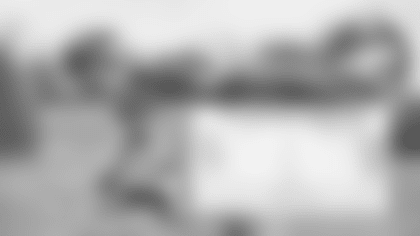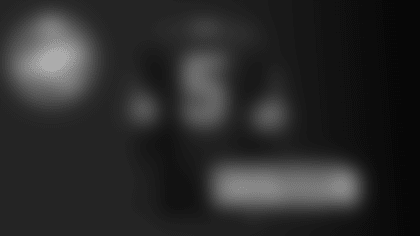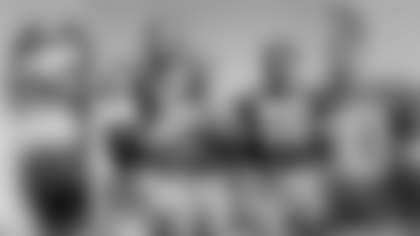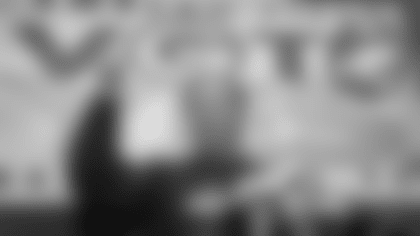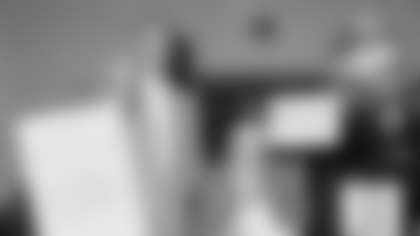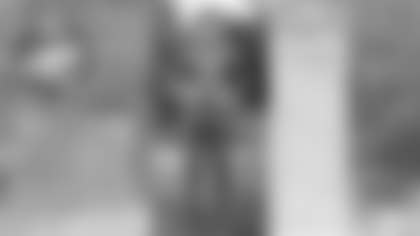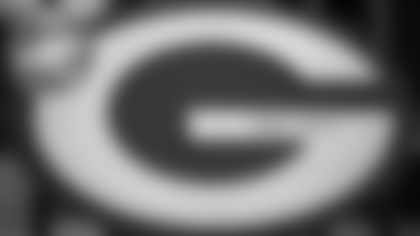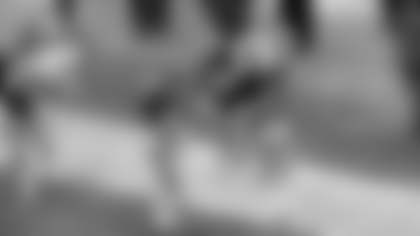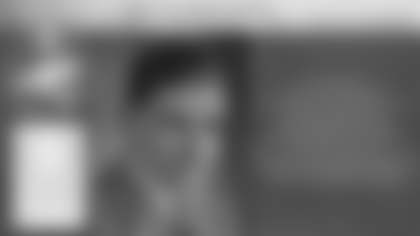James from North Liberty, IA
I don't know how to send this to the media covering the circus of the Tush Push. But maybe you can lend a voice. Blame me for being the cranky old man. I just wanted to weigh in on the Packers' request to eliminate the Tush Push. I know I sound like an old man yelling at clouds, but here goes. The Flying Wedge play was introduced in 1892. It basically had the runner take the ball and sneak up the middle with his blockers concentrating on a single man. This led to the brutality of the game creating numerous fatalities, so bad that the Flying Wedge was outlawed in 1894 and in 1905 President Teddy Roosevelt had to step in to tell football it had to clean up its act or be outlawed altogether. The Tush Push, Brotherly Shove whatever you wish to call it, is essentially the Flying Wedge all over again.
"Brilliant! … Brilliant! … Brilliant!"
Your question immediately brought to mind those two likeable Irishmen with the handlebar mustaches in the Guinness commercials of the early 2000s.
Comparing the "Tush Push" to the Flying Wedge had never crossed my mind, but you're right. The pioneers of football – visionaries such as Walter Camp, Amos Alonzo Stagg, Pop Warner and Fielding Yost – supported the ban on similar tactics more than 100 years ago to make it a safer and better game.
The Flying Wedge was first used in 1892, as you stated, and outlawed in 1894. But coaches responded by designing other mass plays to circumvent the rules over the next decade.
One was the "Turtle-Back Wedge," or "Turtle-Back Formation." First used by Princeton in a 19th-century upset of Yale, it was resurrected by Walter Booth when he became coach at Nebraska and led the Cornhuskers to a 19-0 record in 1902 and '03.
"Nebraska's success on the football field in the past four years has depended almost entirely on one play, the turtle back," the Sunday State Journal in Lincoln, Neb., stated in its Oct. 30, 1904 edition.
From what I could glean through pictures and early 1900s descriptions of the play, the "Turtle-Back Wedge" was not that much different from the "Tush Push."
"The play derives its name from the peculiar appearance of the team formation," the State Journal explained. Before passage of a 1910 rule requiring seven men to be on the line of scrimmage, Nebraska's backs would bunch together while the two ends would drop a step behind the line and they'd push the ball carrier into the line.
"No team has ever showed a defense that could stop this play without at least a small gain," the State Journal stated. It also noted that, "It is a swift moving mass play, but has not the speed of an end run."
With college presidents threatening to abolish football as a sport at their schools and President Teddy Roosevelt summoning Camp and others to a meeting at the White House where he told them "football is on trial," sweeping rule changes were adopted before the 1906 season that all but eliminated such mass plays.
"Under the old football rules and football methods open play was minimized to favor mass play and possession of the ball. Inordinate desire to retain possession of the ball was killing the game," the Cleveland Plain Dealer stated on Oct. 25, 1906. "Under the new rules possession of the ball shifts constantly, and teams must do something other than use mass plays."
Four years later, a rule was adopted that explicitly prohibited "pushing or pulling runner having the ball."
"This rule against pushing the runner was created by the Intercollegiate Rules Committee in 1910," Joel Bussert, former senior vice president of player personnel and football operations for the NFL and now the league's historian, wrote in a recent email. "When the NFL was organized in 1920, we played by college rules and inherited the prohibition against pushing the runner."
The first NFL rulebook was published in 1939, Bussert added.
That year, in "Spalding's Official Guide of the National Football League – Professional Football Rules," the rule was covered under the section titled "Conduct of Players" and subtitled, "Use of Hands, Arms and Body."
Rule 10, Section I, Article 1 of the NFL rulebook read: "No player of the team in possession of the ball may help the runner except by interfering for him, and there shall be no interlocked interference." The penalty was 15 yards.
One of the Supplemental Notes under Article 1 read: "Pushing the runner or lifting runner from ground by teammate is infraction of the rule." Another read: "Interlocked interference means the grasping of one another by, or encircling the body to any degree with, the hands or arms of the players of the team in possession of the ball."
Thus, the "Tush Push" would have been illegal for 96 years. It's legal today, because as Bussert explained, "The rule was removed from the NFL rulebook in 2006, though official enforcement had been lax for several years prior to that."
In my mind, your take here is based in simple common sense.
My particular beef is that the "Tush Push" is just another boring play, and the NFL has too many of those already.
Add it to the list. Extra points have been a bore forever and now 50-yard field goals for teams other than the few with kicking woes are becoming almost as automatic. Punts routinely turn into fair catches and kickoffs into touchbacks. And now, fourth-and-short situations in at least some games, have become another snooze play.
The current debate over the "Tush Push" has centered on player-safety concerns and that, too, was the case in 1906. In a study of the "Gridiron Crisis of 1905," John Watterson of the Department of History at James Madison University reported there were three deaths and 88 serious injuries in college football that year.
The injury triggering the outcry that came to a head that season, according to Watterson, occurred during a series of mass plays and tandem formations that were being run by New York University in a game against Union College. In a desperate attempt to try and stop the drive, Union halfback Harold Moore suffered a cerebral hemorrhage when his head struck the knee of a NYU player. Moore died that night at Fordham Hospital.
Michael from Osseo, MN
Recently my family visited a friend in San Francisco, and I took a short walk around Kezar Stadium, across the street from our hotel. I'd known the 49ers called it home before Candlestick Park, but was curious about the Packers' history there and came across a gem of an article from your column a few years back about the 1965 tie game. You're right, there's something to those old stadium grounds that gives a certain vibe. Even though it was a Saturday and the track was choked with runners, you could practically feel the ghosts of games past going on in an eerie sense. There was something special about that era, when stadiums were only about the sport and spectators, no need for any of the modern distractions. My question: Are there any other sites, besides old City Stadium, of former NFL stadiums you'd describe similarly, that may be worth a visit?
First, Kezar is my favorite just because the Packers played there throughout my youth and there were distinct features to it that are embedded in my memory, starting with the scoreboard and its old analog game clock.
To set the record straight, the Kezar Stadium where the Packers played every year from 1950-66 and then for the final two times in 1968 and '70, was demolished after being severely damaged during the 1989 earthquake in San Francisco. But the 10,000-seat reconstruction still transmits the vibes of old-school football and the ghosts of yesteryear, as you put it.
Along with being located in or adjacent to Golden Gate Park, one also can soak in Kezar's pink-cast concrete columns and arches, as well as the ticket booths, at some of the entrances. They look like they could have been there in 1946, when the 49ers started playing there as members of the All-America Football Conference, even if they weren't.
Plus, the nearby Kezar Pavilion, which dates to 1924, was where was basketball legend Bill Russell made his collegiate debut for the University of San Francisco and played nearly a fourth of his games during the program's 60-game winning streak. And then just across Stanyan Street is Kezar Pub, maybe my favorite sports bar ever. The walls are filled with 49ers photos and memorabilia from the 25 years they played at Kezar Stadium.
Another favorite of mine is Franklin Field, where the Packers lost the 1960 NFL Championship Game to the Philadelphia Eagles. It dates to 1895 and is still home to the University of Pennsylvania football team, making it the oldest college stadium in the country, I believe.
Much like Green Bay's old City Stadium, home to the Packers from 1925-56 and still the home field for East High School, Portsmouth Ohio's Spartan Municipal Stadium was the site where the NFL Portsmouth Spartans played from 1930-33. The powerhouse Packers of those years were 0-2-1 in what was then named Universal Stadium.
I haven't been in Portsmouth in maybe two decades or more, but there's still a state historical marker on the property, although I've read where the old concrete walls reminiscent of pre-World War II stadiums have been demolished and replaced.
There's also Dallas' Cotton Bowl, where the Packers played the Dallas Texans in 1952 and beat the Cowboys in the 1966 NFL Championship Game; the Yale Bowl, where the Packers played the New York Giants in 1973; and Los Angeles Memorial Coliseum, where the Packers played in Super Bowl I and where they played the Rams close to 30 times, starting in the late 1940s.
Wrigley Field was the site of the first Packers-Staleys game in 1921 and home to the Chicago Bears through 1970, while the Packers have played the Bears in Soldier Field since 1971 except for 2002 when the rivalry was played in Champaign, Ill.
For now at least, it's my understanding that RFK Stadium in Washington, D.C., still stands, at least most of it does.
Three other favorites of mine are Racine's Horlick Field, where the Packers played the Racine Legion from 1922-24; Douglas Park in Rock Island, Ill., where that city's Independents played host to the Packers in the early 1920s; and Wade Municipal Stadium, which was built in 1941 and is still in use as a baseball park, on the grounds where the Packers played the Duluth Kelleys in their 1924 season opener.
Of the three, Horlick Field arguably emits a better old-time feel because, as far as I know, it's still partly enclosed by a stone wall.
State Fair Park, outside Milwaukee, was the site of the 1939 NFL Championship Game and a second home to the Packers from 1934-51. There's a renovated racetrack there today on the same site.
It has been years since I stopped at some of the following stadiums where the Packers played preseason games, but as I recall it was worth my time when I did. Then again, I don't know if that would still be true today.
The sites included A.J. McClung Stadium in Columbus, Ga., where the Packers played exhibition games in 1961 and '62; Bowman Gray Stadium in Winston-Salem, N.C., where they played from 1955-60; Hershey (Pa.) Stadium, where they played in 1945 and '54; and Latrobe (Pa.) Memorial Stadium, where they played in 1952.
Let's face it though, Green Bay offers the best pilgrimage of all, Lambeau Field, the shrine of all NFL stadiums.
Fritz from York, ME
I was 17 years old at the time of 1957 draft, when the Packers took Paul Hornung No. 1 with the so-called "Lottery Bonus Pick," then got Ron Kramer at No. 4. Was and still excited about those picks. However, I never did understand why, how or what was the bonus pick.
Legendary Cleveland coach Paul Brown once alluded to it and based on my interviews with maybe 15 or more players and coaches on the Packers' 1961 championship team, Hornung and Ron Kramer were arguably the two best of Vince Lombardi's 36 players that year.
Anyway, here's some background on the bonus pick.
On Jan. 12, 1946, the second day of that year's annual meeting, NFL owners voted unanimously to institute a "bonus pick," to be determined by lottery and starting with the 1947 draft.
Ostensibly, the decision was reached to perk up the selection process, but it was reported at the time that NFL owners had an ulterior motive. They wanted to enhance their chances of winning a bidding war for the nation's best prospect in their competition with the All-America Football Conference.
The older league's best teams were the ones with the most cash and also far more attractive to most players than perennial losers like the Boston Yanks and Chicago Cardinals, whose booby prize had been the No. 1 overall pick in five of the previous eight drafts.
Here's how the bonus rule worked the first year, when there were 10 teams in the NFL.
Ten pieces of paper numbered from 1 to 10 were placed in a hat. Packers coach Curly Lambeau drew No. 4, for example. Bears owner-coach George Halas drew No. 10. That determined the order for the next draw.
At that point, 10 more pieces of paper were placed in a hat: Nine were blank and one was marked with an X. Nine teams drew blanks; Halas, picking last, plucked the X, and his prize was the No. 1 pick a day after winning the NFL championship with a 24-14 victory over the Giants.
There were 12 bonus picks in all, the result of the NFL adding two more teams in the 1950s. Once a team landed the bonus pick, it was ineligible for the draw thereafter.
Bob Fennimore, a halfback from what was then Oklahoma Agricultural and Mechanical College (now Oklahoma State) was Halas' choice in the 1947 draft. The last bonus pick was Rice quarterback King Hill by the Chicago Cardinals in the 1958 draft.
Just a reminder in closing. As I resume writing occasional Q&As, I need your first names and the cities or towns where you live in order to post your questions. My mailbox is filled with questions I've saved but can't answer without a hometown.




